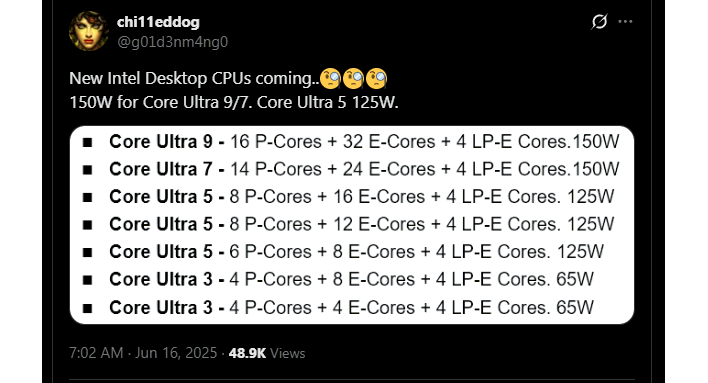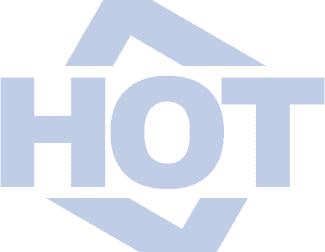Intel CFO Says It Will Take The Fight To AMD With Nova Lake On Desktop
As far as the former and latter go, Zinsner confirmed that Intel has already received the $5.7 billion US dollars promised by President Trump, and also that the company has accepted a US $2B investment from Japanese company SoftBank, who also owns Arm Holdings. According to Zinsner, the real purpose of the US government's investment was to save Intel from having to sell off its fabs.
The really interesting news to your author, though, were Zinsner's statements about its product roadmap. Here's a cleaned-up version of the messy transcript from the audio recording of the interview:
Interviewer: If we pivot over to the product side of things, between notebook, desktop, and server, where you think the product line is strong, or needs some work, and what are you guys doing to address it?
Zinsner: Yeah, I think on notebook we're in pretty good shape. We're now in the process... last year we introduced Lunar Lake, this year it's in the process of gaining adoption; we're expecting this quarter to be a pretty good quarter for for Lunar Lake, so notebook I think is solid, share is solid... as you know, we kind of fumbled the football on the desktop side, particularly the high performance desktop side [...] and it's mostly because of this high-end desktop business that, we didn't have a good offering this year. But Nova Lake, which is the next product, is a more complete, set of SKUs. It does address the high-end desktop market and so we would expect that we will improve our position, next year. All in all, I actually feel pretty good about client. It's not executing flawlessly, but it's it's executing pretty well.
Essentially, what Zinsner is admitting is that Arrow Lake's desktop launch, the Core Ultra 200S processors, were underwhelming and priced too high versus competitor AMD's offerings. That's essentially the conclusion we came to, although we also think that after some price cuts, chips like the Core Ultra 7 265K are a very solid value, particularly for productivity work.
The really interesting statement comes after, where he says that Nova Lake is "a more complete set of SKUs." He continues, stating that Nova Lake "does address the high-end desktop market" and that he expects that Intel will "improve [its] position next year." In other words, Intel believes that Nova Lake is at the very least competitive against AMD's offerings. Since AMD isn't expected to launch Zen 6 processors until late next year at the very earliest, Intel may well have free reign of the desktop market in 2026.

Based on the rumors we've seen about Nova Lake, it could be quite promising indeed. The chips are said to take page from AMD's book and use a tiled design with two compute chiplets, offering up to 52 cores on desktop—2×(8+16) compute tiles, plus an additional 4 LP cores on the I/O die—and potentially some 288 megabytes of last-level cache thanks to the long-awaited bLLC feature, analogous to AMD's 3D V-Cache. Supposedly, Intel also plans to support Nova Lake for three or four CPU generations, mirroring the longevity of AMD's Socket AM4 platform.
Zinsner also talked about Diamond Rapids, which he apparently feels will not close the performance gap with AMD, but rather that he thinks the successor, Coral Rapids, will be where Intel finally catches up to AMD in the server market. Whatever happens, this blazing competition benefits consumers. Hopefully Intel can continue to execute on all cylinders so we can enjoy a healthy rivalry between two of the oldest chip companies.

